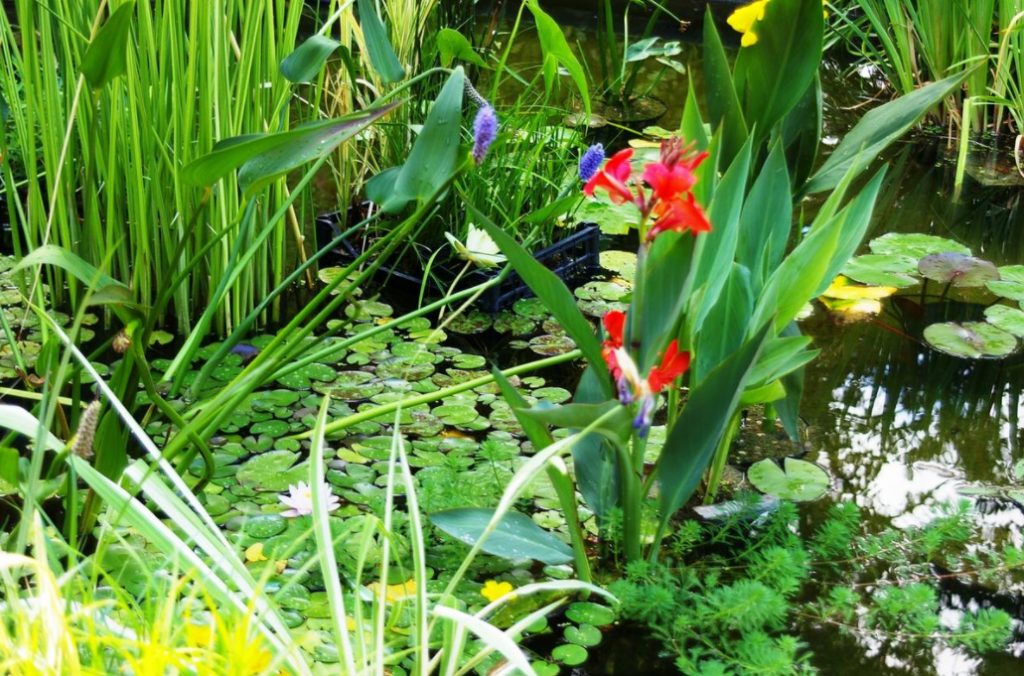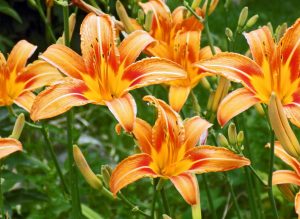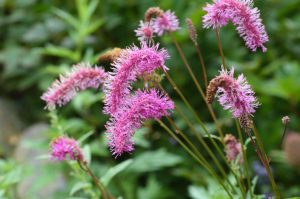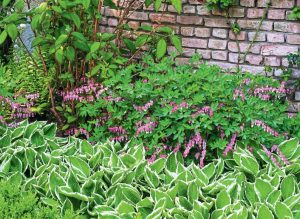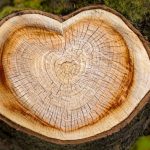Today we will have an interesting conversation about plants that love water. We will look for them where it is in abundance: near reservoirs.
Before the virtual tour, let’s refresh our memory of the main Botanical terms. All water-loving plants are divided into groups:
1) living in wet places (including swamp species),
2) plants submerged in water with the lower part,
3) species that are completely or mostly submerged in water.

Plants of all groups have common characteristics, since life in and near water has left its mark on them. This:
- large thin leaves, often with hairs on the surface of the plate,
- presence of hydatodes — specific stomata that can release moisture (guttation),
- weak roots,
- long, thin weak stems that cannot be in an upright position without water support,
- rapid wilting outside of water.
Placement zones
It is important to correctly determine the landing site. So, in deep water (40 cm or more), true aquatic plants will be comfortable. Coastal water species prefer shallow water (depth from 40 to 10 cm). At the edge of the reservoir, with a water fluctuation of ±10 cm from the level of the water surface, there is a swampy zone where swamp species grow excellently. Outside the capillary barrier of the reservoir there is a coastal zone where many water plants can be placed.
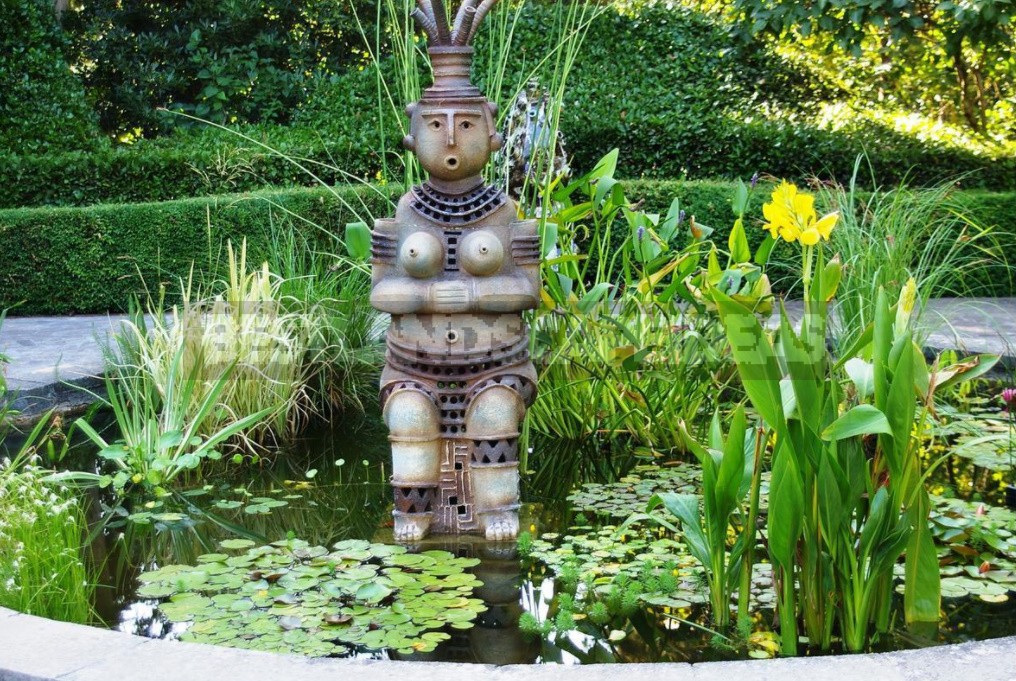
Today you will see 6 more amazing plants that can become a worthy decoration of a dacha pond or stream.
1. Nymphoides peltata
In the literature, it is called “water fringe” (the edges of the petals are fringed) and “yellow floating heart”. He is from Europe and Asia.
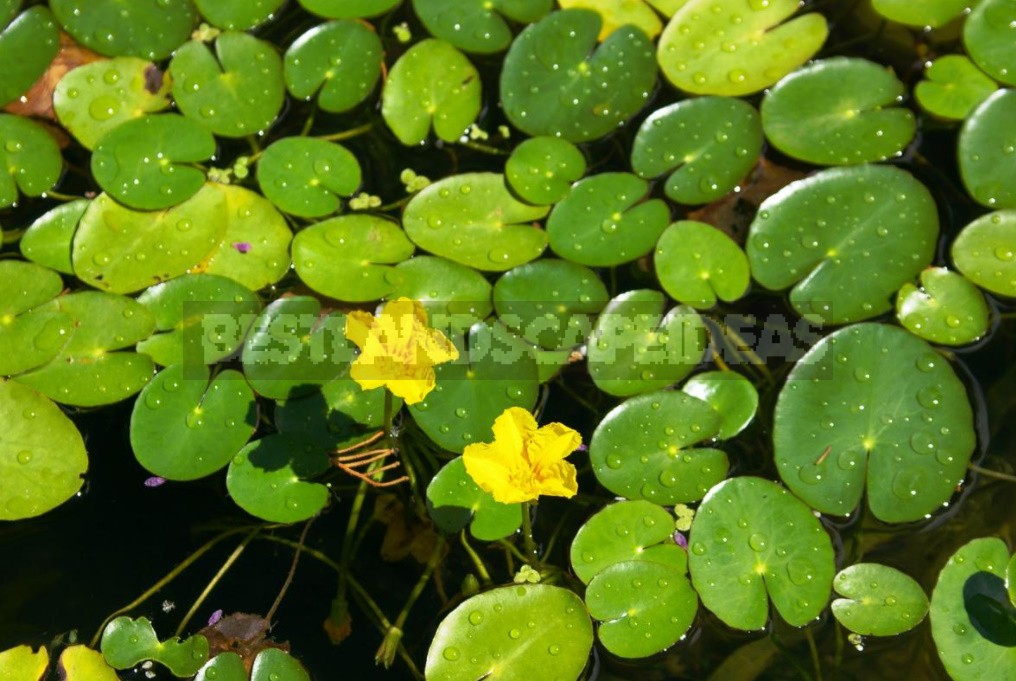
An aquatic rhizomatous perennial from the Menyanthaceae family. Very beautiful: leaves from wide-oval to round, 5-10 cm in diameter, similar to the leaves of the hybrid water Lily, bloom in summer; yellow flowers, funnel-shaped, 2 cm in diameter, on long stems, somewhat resemble the flowers of the yellow Cup. It can grow in almost all areas of the reservoir, from wet coastal (from 5 cm) to deep-water (up to 1-2 m).
Features of care and reproduction
It is better to plant in a container, thereby immediately limiting its active growth and the area covered by the leaves of the water mirror. Winter hardy in Central Russia; in the English reference literature, its minimum is consistently marked at -15°C. If you are draining water from your pond for the winter, then mulch the containers with the plant with some organic substrate, and wrap the pots with rags or put them in a non-freezing room. Propagated by dividing rhizomes in late spring or summer.
2. Lythrum virgatum
It is native to Eastern Europe, Western and Central Asia, and northwestern China. In contrast to the more common relative — L. salicaria — it has a more bare stem, it is lower, the inflorescences are not as dense, the flowers are smaller.
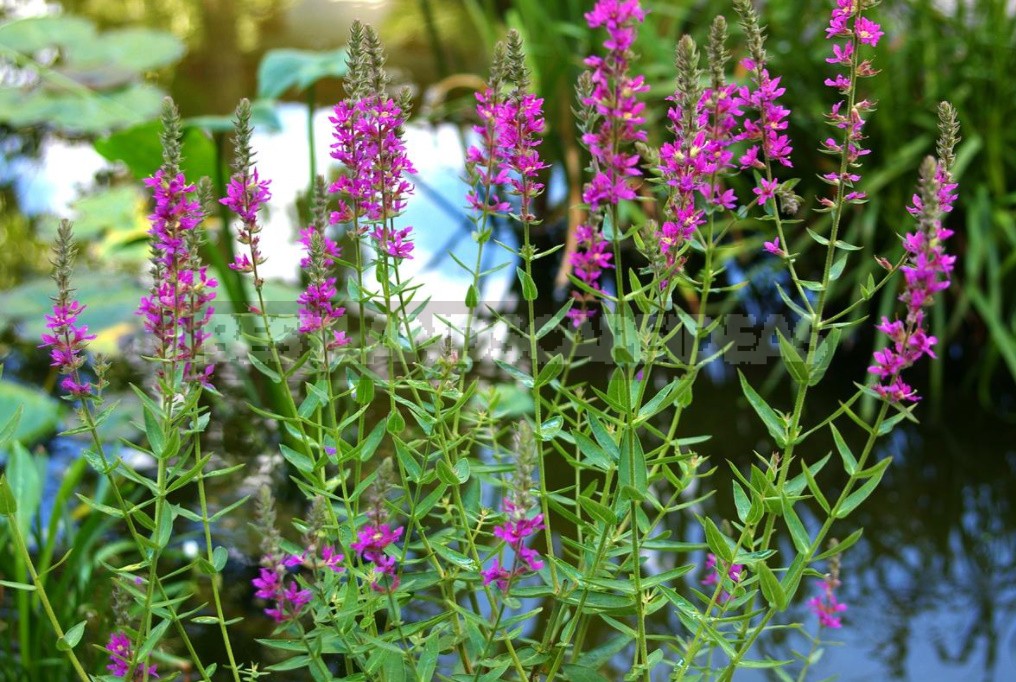
It is a thicket perennial up to 90 cm high and 45 cm wide. Leaves are linear-lanceolate, glabrous, 10 cm long. The flowers are star-shaped purple-red, purple-pink, 1 cm in diameter, collected in slender spike-shaped racemes up to 30 cm high, blooming from the beginning to the end of summer. It has decorative varieties that are even more spectacular than the original type: ‘Rose Queen’ (up to 60 cm high, pink-purple flowers) and ‘The Rocket’ (up to 80 cm high, dark pink flowers).
Features of care and reproduction
They do not differ from the corresponding characteristics of L. salicaria.
3. Rhynchospora latifolia
Elegant exotic plant up to 45 cm in height from the Cyperaceae family. Beautiful are its narrow leaves and inflorescences that look like flying stars.
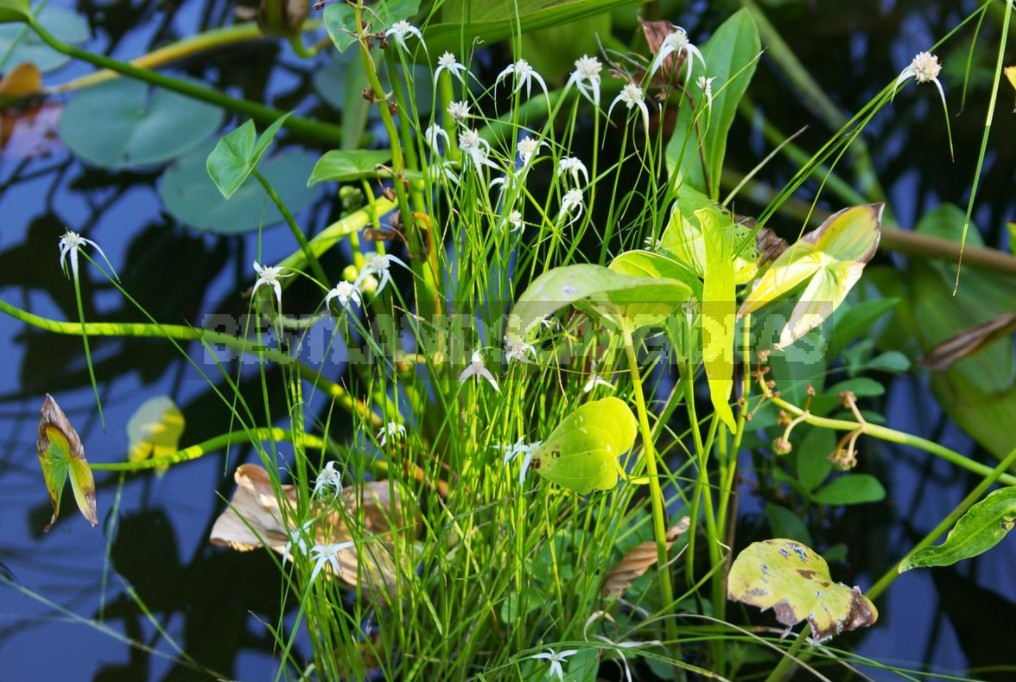
Features of care and reproduction
It is better to plant in a container and put it at a depth of 5 to 40 cm, its growth point should be at the level of the water surface or 5 cm higher. Thermophilic, it is not left to winter in the pond, and brought into a cool room and do not forget to water. Propagated by seeds. Sowing in spring in a container, in a loose soil substrate. You can save it in the winter as a room, without immersion in water, and in the summer again put in the reservoir. With this cultivation of dichromena as a perennial plant, it can be divided in the spring.
4. Canna x hybrida
Charming representative of the eponymous family Cannaceae. Its homeland is considered to be South and Central America, India. In this pond of the Garden, every season some low variety of southern Tropicana is put in a container.
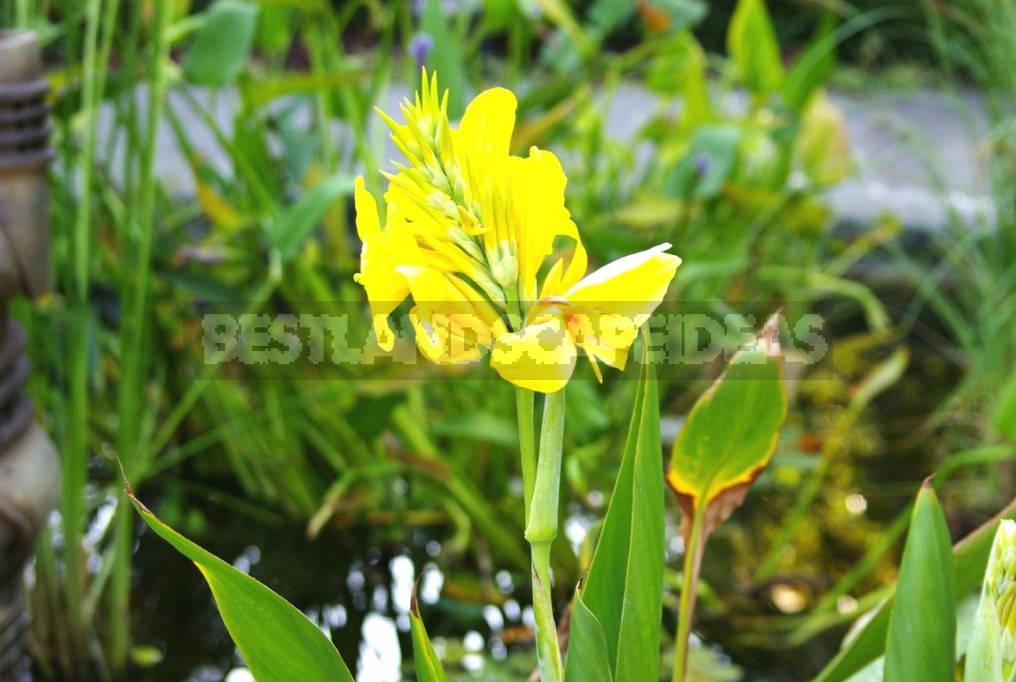
A perennial herb up to 2 m high and 50-70 cm wide. The leaves are very large, 30-70 cm long, oblong, green, purple, and variegated. Flowers are large, 5-9 cm in diameter, asymmetrical, collected in spike-shaped inflorescences at the ends of shoots, bloom in August.
Features of care and reproduction
Rhizomes are planted in containers in the spring, and in early summer they are exposed to a depth of 10-20 cm. Canna x hybrida is thermophilic, it is not left for the winter in the reservoir. The aboveground part of the plant is cut off, pots with rhizomes are placed in non — freezing rooms-or the rhizomes are stored in wet sand or peat. If you keep it at room temperature in winter, it may even bloom again! Propagate by dividing rhizomes (divisions with at least 1-2 buds) in the spring, after their germination.
5. Lysichiton camtschatcensis
A rare perennial rosette plant from the Araceae family. Large, spectacular, similar to Zantedeschia aethiopica. Of course, in our reservoirs it does not look as impressive as in North-East Asia.
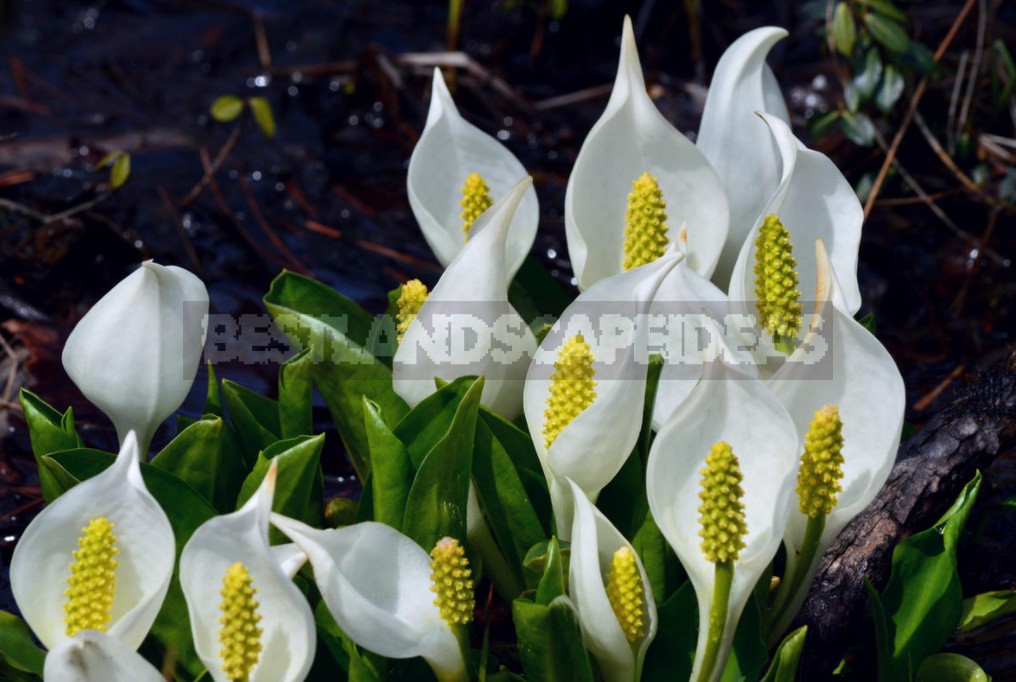
Height and width up to 75 cm. The leaves are oval-rounded, leathery, shiny, medium to dark green, 50-100 cm long. The inflorescence (as in all representatives of the Araceae) is an ear covered with a white pointed blanket up to 40 cm long. Blooms in late spring.
Features of care and reproduction
The optimal habitat area is shallow water. Propagated by seeds. Sowing in may. Seedlings will bloom a few years after planting.
6. Pontederia cordata
Spectacular exotic beauty from the family of the same name Pontederiaceae. It is native to Eastern North America, where it is naturally distributed to the Caribbean.

It is a coastal-water perennial. In a reservoir, it can reach a height of 0.9-1.3 m and a width of 60-75 cm. The leaves are large, heart-shaped, shiny, up to 25 cm long. The flowers are blue, small, tubular, collected in dense cylindrical spike-shaped inflorescences 2-16 cm long. Flower stalks 35 cm long bloom from the beginning to the end of summer. There is a decorative form (var. lancifolia, syn. P. lanceolata) 1.2-1.5 m high and 1 m wide, leaves 12-20 cm long, peduncles 60-70 cm — This plant is an oxygenator that purifies water well. Propagated by dividing the Bush in late spring.
Features of care and reproduction
It is better to plant it in a container and put it both in shallow water and in a deep-water zone. However, keep in mind: the deeper the dive, the less spectacular the bloom will be. You can leave it to winter in the center of the reservoir, if you do not lower the water for the winter.
In addition, water plants can be considered:
- Astilbe,
- Aruncus,
- Persicaria bistorta, syn. Polygonum bistorta,
- Iris sibirica,
- Caltha palustris,

- Trollius,
- Filipendula,
- Hemerocallis,
- Glyceria spectabilis,
- Mimulus guttatus, syn. M. langsdorfii,
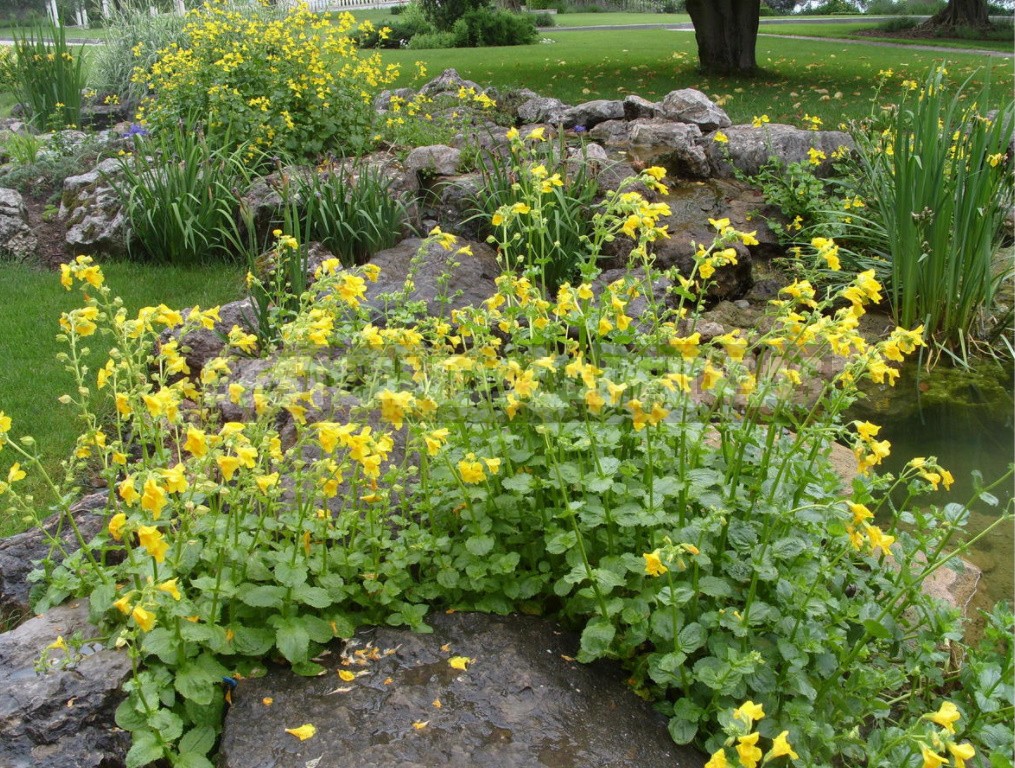
- Miscanthus,
- Molinia caerulea,
- Carex,
- Eriophorum,
- Hydrocotyle vulgaris and others.
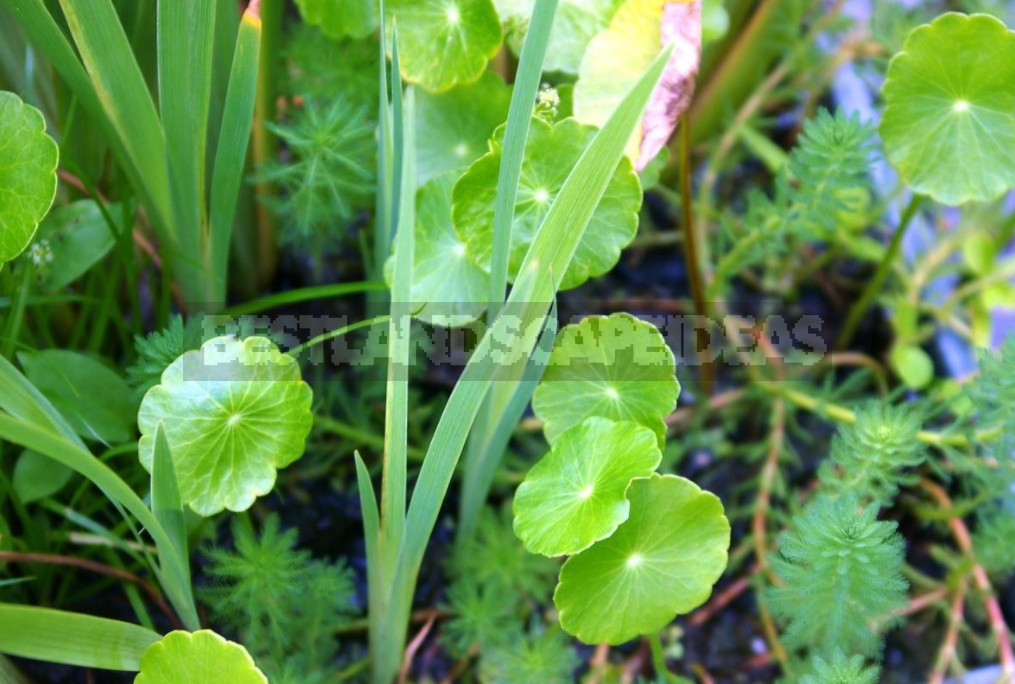
Now, knowing about the comfortable living conditions and nuances of reproduction of water-loving species, you can easily select the best candidates for landscaping various areas of the reservoir. And what water plants are already growing in your country?
